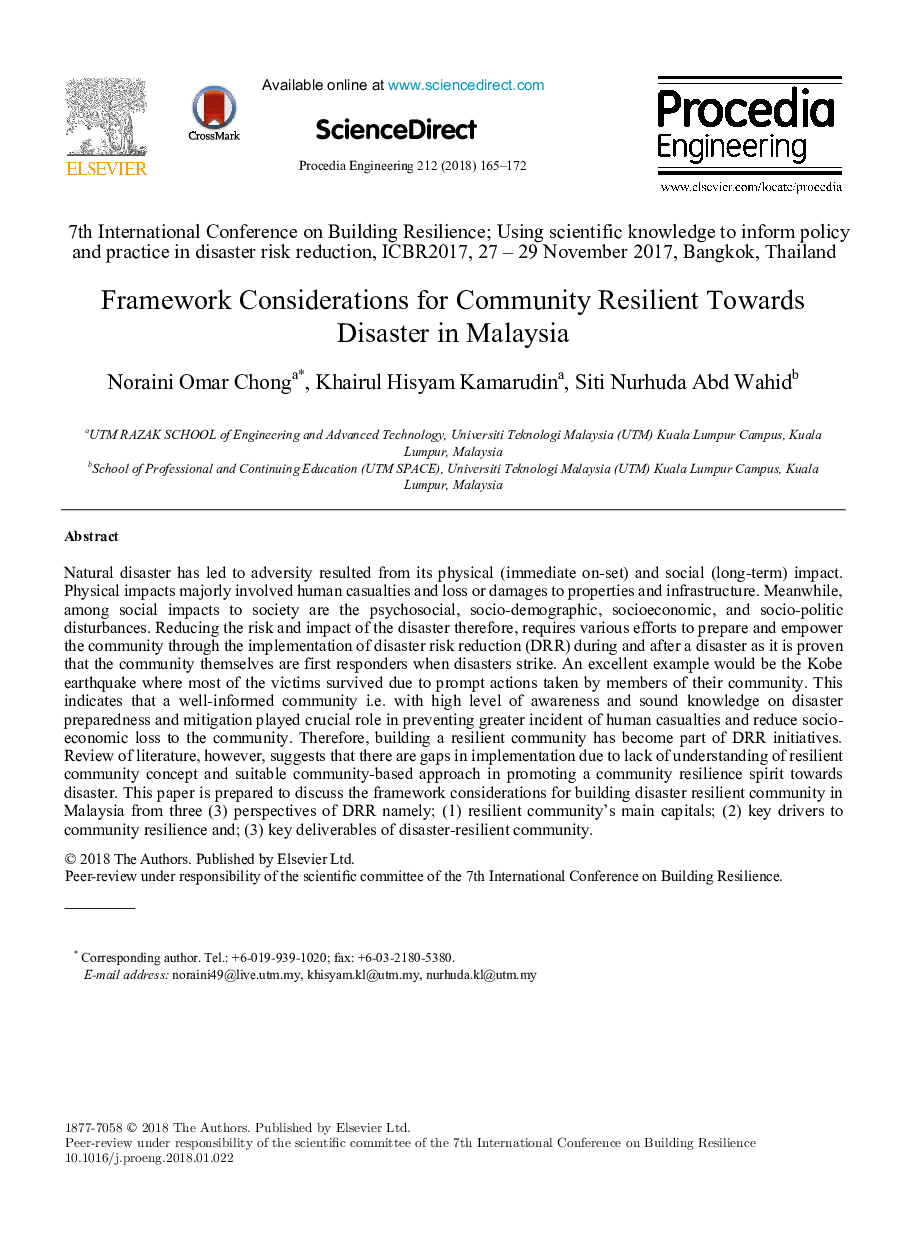| Article ID | Journal | Published Year | Pages | File Type |
|---|---|---|---|---|
| 7225890 | Procedia Engineering | 2018 | 8 Pages |
Abstract
Natural disaster has led to adversity resulted from its physical (immediate on-set) and social (long-term) impact. Physical impacts majorly involved human casualties and loss or damages to properties and infrastructure. Meanwhile, among social impacts to society are the psychosocial, socio-demographic, socioeconomic, and socio-politic disturbances. Reducing the risk and impact of the disaster therefore, requires various efforts to prepare and empower the community through the implementation of disaster risk reduction (DRR) during and after a disaster as it is proven that the community themselves are first responders when disasters strike. An excellent example would be the Kobe earthquake where most of the victims survived due to prompt actions taken by members of their community. This indicates that a well-informed community i.e. with high level of awareness and sound knowledge on disaster preparedness and mitigation played crucial role in preventing greater incident of human casualties and reduce socio-economic loss to the community. Therefore, building a resilient community has become part of DRR initiatives. Review of literature, however, suggests that there are gaps in implementation due to lack of understanding of resilient community concept and suitable community-based approach in promoting a community resilience spirit towards disaster. This paper is prepared to discuss the framework considerations for building disaster resilient community in Malaysia from three (3) perspectives of DRR namely; (1) resilient community's main capitals; (2) key drivers to community resilience and; (3) key deliverables of disaster-resilient community.
Related Topics
Physical Sciences and Engineering
Engineering
Engineering (General)
Authors
Noraini Omar Chong, Khairul Hisyam Kamarudin, Siti Nurhuda Abd Wahid,
